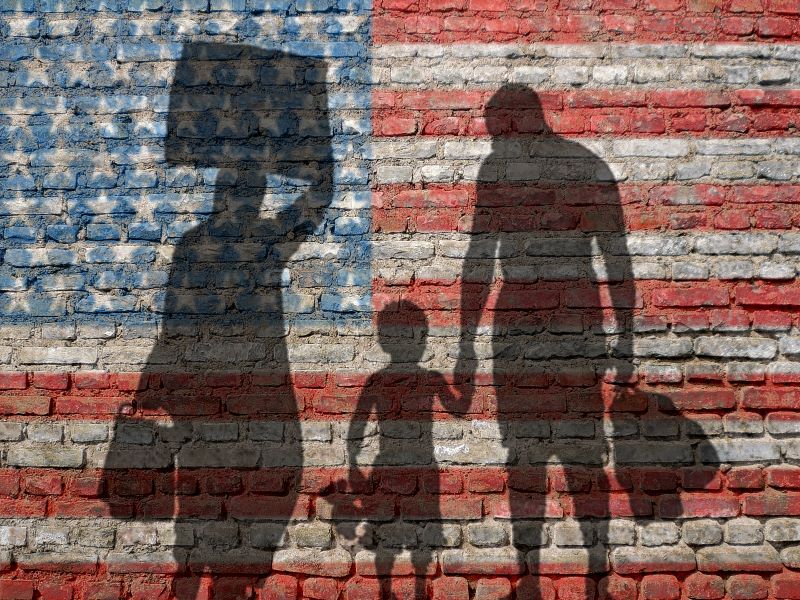Recommended
The previous US administration sought to end all US admissions of refugees, people who face violent persecution in their home countries. After four years of work dedicated to refugee exclusion, Trump officials succeeded in slashing admissions by 86 percent.
That has massive humanitarian effects, to be sure, given that other countries have not filled the void left by the United States.
But it also has economic effects. Refugees, like all people, are economic actors. They typically work, earn, consume, save, invest, and pay taxes in the places they go. Their economic and fiscal effects—not just humanitarian concerns—certainly shape how many Americans view refugee policy.
In this blog, I’ll show how the Trump administration's cuts to US refugee admissions led to 295,000 fewer refugees and cost the US billions in economic growth. First, I explore refugee admittance under the last administration, followed by explaining the economic and fiscal costs of this policy. Lastly, I introduce my new research on the ways cutting refugee and asylum acceptances continues to damage the US economy.
The drop in refugee resettlement
As an economist, I am not always in the field of correcting public misconceptions. But I want to make clear just how drastic the changes in US refugee policy have been recently.
To understand how this policy played out, I calculated the number and costs of “missing refugees” in the economy. The number of “missing refugees” in 2020, for example, is estimated as the difference between how many refugees would have arrived by then if refugee resettlement had stayed at 2016 levels. Unfortunately, refugee resettlement in fiscal year 2021 was similarly low to fiscal year 2020, which adds to my calculations another year of “missing refugees.” US refugee resettlement is a complex process from UN agencies to neighborhood aid groups; it cannot simply be restarted after being hobbled.
By 2021, there would have been 295,000 more refugees in the US population if the Trump administration had not pursued a successful policy of refugee restriction. Their absence from the country is permanent and incurs costs now, next year, and every year after that.
You’ll often hear these changes illustrated as a "slow down.” In truth, it was closer to a wipeout. Relative to fiscal year 2016, refugee resettlement in the US in 2020 was down 86 percent. This drop was not substantially influenced by the pandemic. The decline from 2019 to 2020 was similar to the declines in each of the three preceding years. It was nearly complete by February 2020, before pandemic restrictions began.
Figure 1. Annual Refugee Arrivals in the United States
The policy has “succeeded” in its goal of eliminating as many refugees as possible from the America we live in now. A less-understood consequence has been to shrink the US economy and drain public coffers.
How cutting down refugee acceptances and asylum admissions hurts the economy
Trump-era refugee restrictions permanently reduce the US economy by $9.1 billion each year. I calculated this by measuring the number of “missing refugees” (295,000) by my new estimate of net GDP effect per refugee, per year ($30,962).
These restrictions also affect the country’s public coffers. I estimate that continued reductions in refugee resettlement now cost federal, state, and local governments $2.0 billion every year. I calculated that by multiplying the same number of “missing refugees” by a new estimate of the net fiscal effect per refugee, per year at all levels of government ($6,844).
That annual loss will increase for every additional year that refugee admissions remain at their current, historic lows.
My new research on the economic and fiscal effects of reduced numbers of refugees and asylum seekers
In a new paper, I look on an even broader level at the ways reducing numbers of refugees and asylum seekers effects the US economically and fiscally.
In the paper, I measure the substantial and ongoing economic consequences of these reduced admissions by first critically reviewing the research literature and adding new analysis including ripple effects beyond the wages earned or taxes paid by migrants. My analyses include the costs of specific policies, outlined above, but also act as a caution to policymakers.
According to my most recent analysis, even a 10 percent reduction in refugee resettlement may cost the US $1.4 billion, and cost federal, state, and local governments more than $310 million over 5 years.
Similarly, my paper analyzes the effects of asylum seekers, much more than I’m able to in this blog. I find that a 10 percent reduction in asylum seekers likely causes a loss to the American economy of more than $8.9 billion, and federal, state, and local governments more than $1.5 billion over five years.
Conclusion
These estimates imply that admitting refugees and asylum seekers does not constitute an overall economic and fiscal sacrifice. Their arrival brings up-front fiscal costs to be sure—particularly for local governments—as does every good investment. But those costs are overwhelmed on average by economic benefits on the other side of the ledger.
Admitting refugees and asylum seekers, at the levels seen prior to the previous administration’s mass-exclusion policy, is a case where humanitarian interest and economic self-interest are aligned. Every year that those admissions remain low constitutes not just a major humanitarian blight, but a mounting economic cost to all Americans.
Disclaimer
CGD blog posts reflect the views of the authors, drawing on prior research and experience in their areas of expertise. CGD is a nonpartisan, independent organization and does not take institutional positions.






